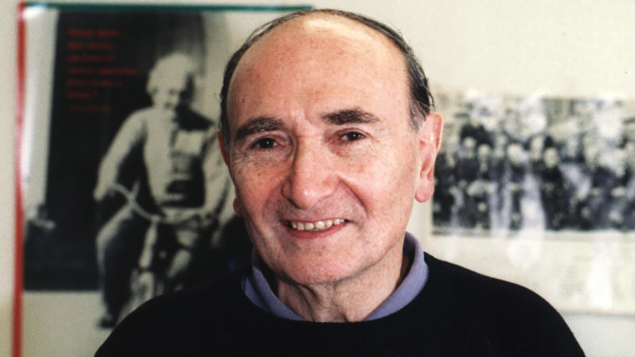
Theorist Alberto Sirlin, a pioneer in electroweak radiative corrections, passed away on 23 February aged 91. His work played a key role in confirming predictions of the Standard Model (SM) at the ±0.1% level. He was a professor at New York University for 62 years, mentored 14 PhD students and remained an active researcher until shortly before his death.
Born in Buenos Aires in 1930, Alberto received a physics and mathematics degree from the University of Buenos Aires in 1953. That year he went to Brazil where he took a quantum mechanics course taught by Richard Feynman. In a 2015 essay “Remembering a Great Teacher”, Alberto fondly recalled that experience and the enduring friendship that followed. In 1954 he travelled to UCLA and collaborated with Ralph Behrends and Robert Finkelstein on an early study of QED radiative corrections to muon decay in Fermi’s general theory of weak interactions. Alberto then moved to graduate school at Cornell University, where he collaborated with Toichiro Kinoshita on the QED corrections to muon and nuclear beta decays in the V-A Fermi theory. Their investigation showed that QED corrections increased the muon lifetime by about 0.4% – an effect still used to define the Fermi constant. For nuclear beta decay, where QED effects were logarithmically dependent on an arbitrary cutoff scale, Alberto would later show how electroweak unification determines this scale. After Cornell he spent two years (1957–1959) as a postdoc at Columbia University, supervised by T D Lee, before joining the faculty of New York University. He also held visiting appointments at BNL, CERN, Hamburg University, Rockefeller University and The Institute for Advanced Study.
When the SM came together in the early 1970s, Alberto’s early work on QED corrections to weak-interaction processes uniquely prepared him for a leading role in computing electroweak quantum loop corrections. For example, he showed how additional loop corrections involving W and Z bosons led to a replacement of the logarithmic cutoff found in semi-leptonic beta decays by the Z-boson mass, resulting in a ~2% increase for all semi-leptonic charged-current decay rates. This is essential for unitarity tests of the quark mixing matrix, and confirms the validity of the SM at more than 20σ!
In a 1980 paper that has been cited more than 1400 times, Alberto introduced the on-shell renormalisation scheme based on physical parameters and the quantity Δr, which encodes the radiative effects. This scheme has been used to study deep-inelastic neutrino–nucleus scattering, neutrino-electron scattering, atomic parity violation, polarised electron–electron scattering asymmetries, W&Z precise mass predictions, and more, not only by Alberto and his former students and collaborators, but by the entire particle-physics community in searches for new-physics effects. Together with his former student William Marciano, he won the 2002 J J Sakurai prize of the American Physical Society for their pioneering work on radiative corrections.
In witnessing the rise and then completion of the SM with the discovery of the Higgs boson in 2012, Alberto was able to enjoy the fruits of his labour. We, his students, have been inspired by Alberto’s dedication and enthusiasm. We are grateful that we could join his journey through life and physics. He was our great teacher.







